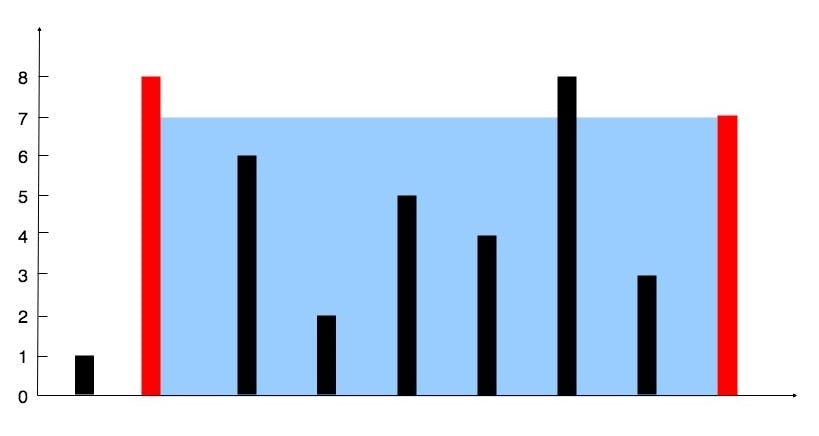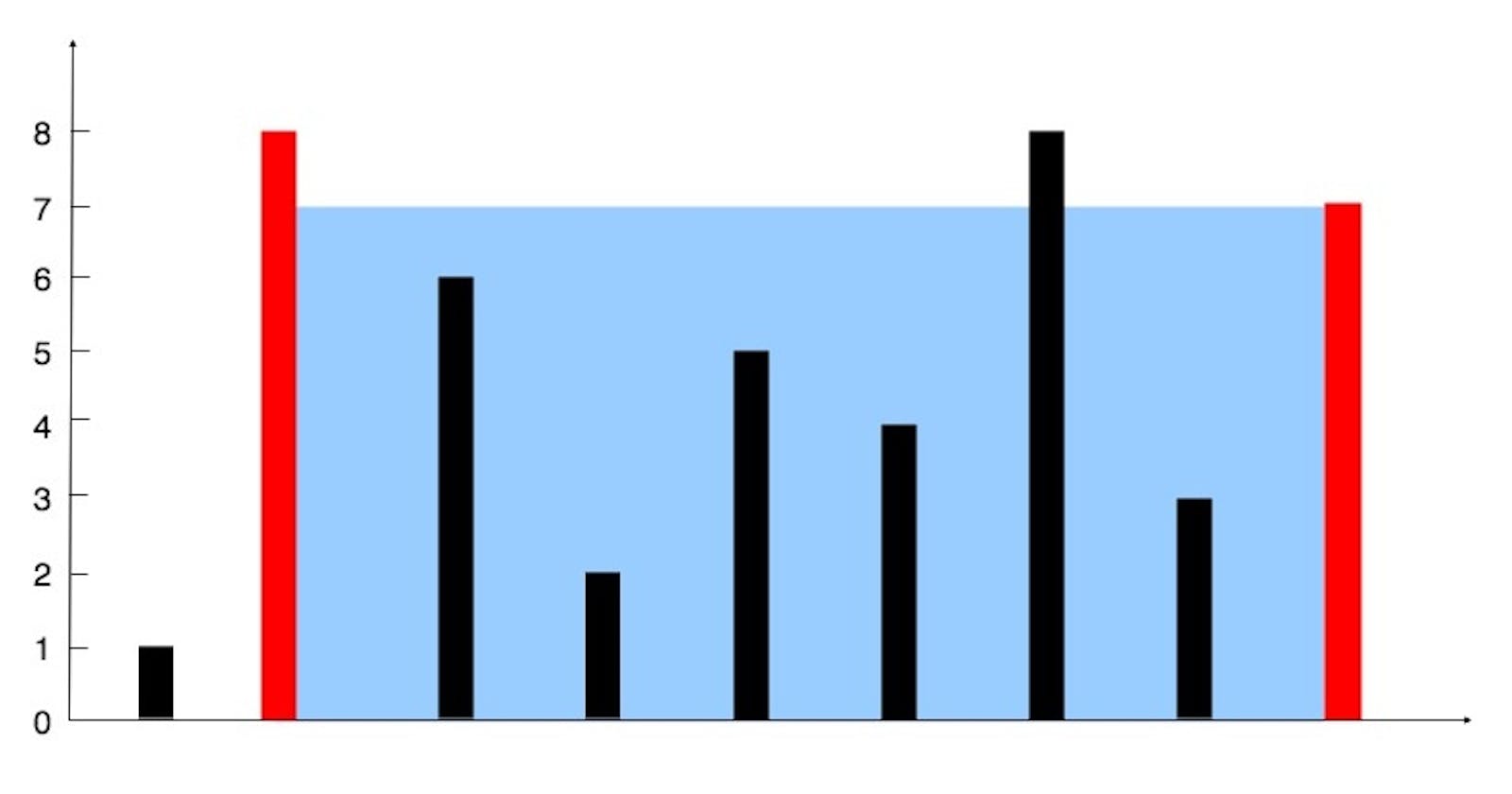How to solve Leetcode 11. Container With Most Water
An example of two-pointer technique
Problem statement
You are given an integer array height of length n. There are n vertical lines drawn such that the two endpoints of the i-th line are (i, 0) and (i, height[i]).
Find two lines that together with the x-axis form a container, such that the container contains the most water.
Return the maximum amount of water a container can store.
Notice that you may not slant the container.
Example 1

Input: height = [1,8,6,2,5,4,8,3,7]
Output: 49
Explanation: The above vertical lines are represented by array [1,8,6,2,5,4,8,3,7]. In this case, the max area of water (blue section) the container can contain is 49.
Example 2
Input: height = [1,1]
Output: 1
Constraints
n == height.length.2 <= n <= 10^5.0 <= height[i] <= 10^4.
Solution 1: Bruteforce
For each line i, find the line j > i such that it gives the maximum amount of water the container (i, j) can store.
Code
#include <iostream>
#include <vector>
using namespace std;
int maxArea(vector<int>& height) {
int maxA = 0;
for (int i = 0; i < height.size() - 1; i++) {
for (int j = i + 1; j < height.size(); j++) {
maxA = max(maxA, min(height[i], height[j]) * (j - i) );
}
}
return maxA;
}
int main() {
vector<int> height{1,8,6,2,5,4,8,3,7};
cout << maxArea(height) << endl;
height = {1,1};
cout << maxArea(height) << endl;
}
Output:
49
1
Complexity
Runtime:
O(N^2), whereN = height.length.Extra space:
O(1).
Solution 2: Two pointers
Any container has left line i and right line j satisfying 0 <= i < j < height.length. The biggest container you want to find satisfies that condition too.
You can start from the broadest container with the left line i = 0 and the right line j = height.length - 1. Then by moving i forward and j backward, you can narrow down the container to find which one will give the maximum amount of water it can store.
Depending on which line is higher, you can decide which one to move next. Since you want a bigger container, you should move the shorter line.
Example 1
For height = [1,8,6,2,5,4,8,3,7]:
Starting with
i = 0andj = 8.area = min(height[i], height[j]) * (j - i) = min(1, 7) * (8 - 0) = 8. maxArea = 8.height[i] = 1 < 7 = height[j], moveito1.area = min(8, 7) * (8 - 1) = 49. maxArea = 49.height[i] = 8 > 7 = height[j], movejto7.area = min(8, 3) * (7 - 1) = 18. maxArea = 49.So on and so on. Final
maxArea = 49.
Code
#include <iostream>
#include <vector>
using namespace std;
int maxArea(vector<int>& height) {
int maxA = 0;
int i = 0;
int j = height.size() - 1;
while (i < j) {
if (height[i] < height[j]) {
maxA = max(maxA, height[i] * (j - i) );
i++;
} else {
maxA = max(maxA, height[j] * (j - i) );
j--;
}
}
return maxA;
}
int main() {
vector<int> height{1,8,6,2,5,4,8,3,7};
cout << maxArea(height) << endl;
height = {1,1};
cout << maxArea(height) << endl;
}
Output:
49
1
Complexity
Runtime:
O(N), whereN = height.length.Extra space:
O(1).

